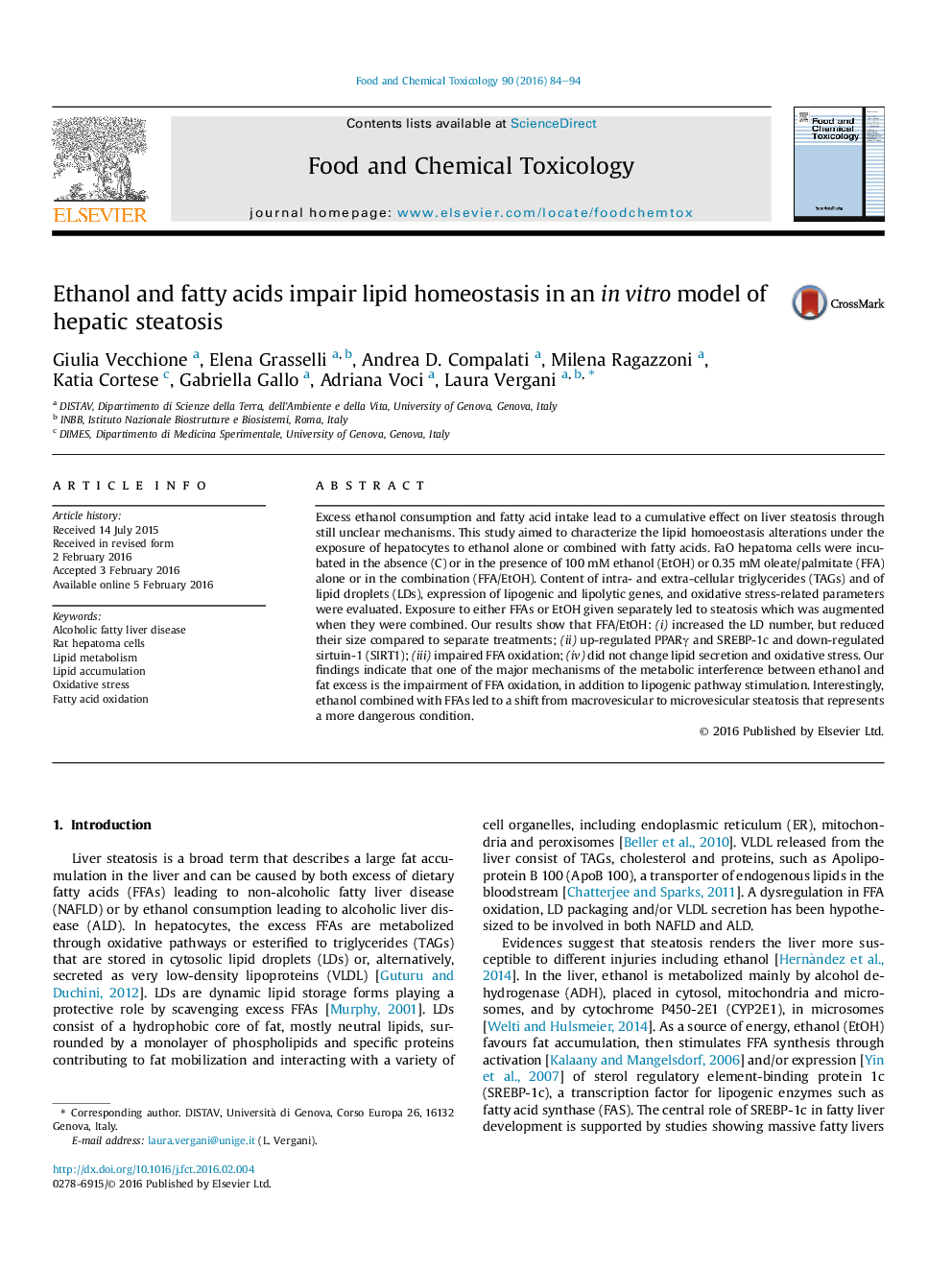| Article ID | Journal | Published Year | Pages | File Type |
|---|---|---|---|---|
| 2584857 | Food and Chemical Toxicology | 2016 | 11 Pages |
•Excess fat accumulation makes the liver more susceptible to ethanol injury.•The combination of ethanol and fatty acids exerts synergistic effect on lipid homoeostasis.•The metabolic interference between ethanol and FFAs impairs FFA oxidation.
Excess ethanol consumption and fatty acid intake lead to a cumulative effect on liver steatosis through still unclear mechanisms. This study aimed to characterize the lipid homoeostasis alterations under the exposure of hepatocytes to ethanol alone or combined with fatty acids. FaO hepatoma cells were incubated in the absence (C) or in the presence of 100 mM ethanol (EtOH) or 0.35 mM oleate/palmitate (FFA) alone or in the combination (FFA/EtOH). Content of intra- and extra-cellular triglycerides (TAGs) and of lipid droplets (LDs), expression of lipogenic and lipolytic genes, and oxidative stress-related parameters were evaluated. Exposure to either FFAs or EtOH given separately led to steatosis which was augmented when they were combined. Our results show that FFA/EtOH: (i) increased the LD number, but reduced their size compared to separate treatments; (ii) up-regulated PPARγ and SREBP-1c and down-regulated sirtuin-1 (SIRT1); (iii) impaired FFA oxidation; (iv) did not change lipid secretion and oxidative stress. Our findings indicate that one of the major mechanisms of the metabolic interference between ethanol and fat excess is the impairment of FFA oxidation, in addition to lipogenic pathway stimulation. Interestingly, ethanol combined with FFAs led to a shift from macrovesicular to microvesicular steatosis that represents a more dangerous condition.
